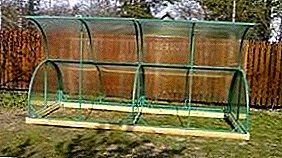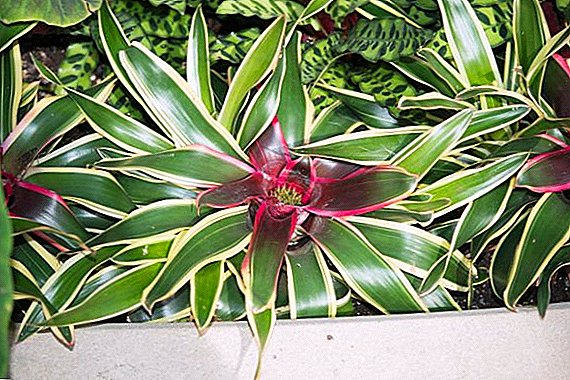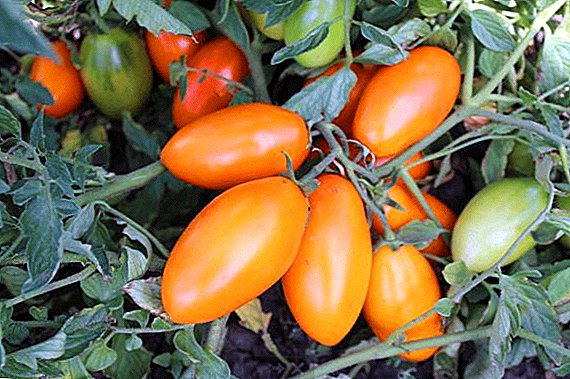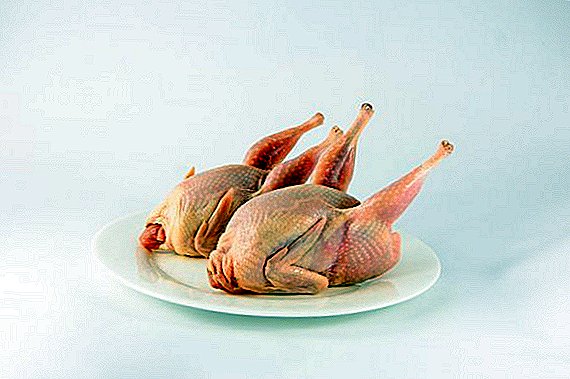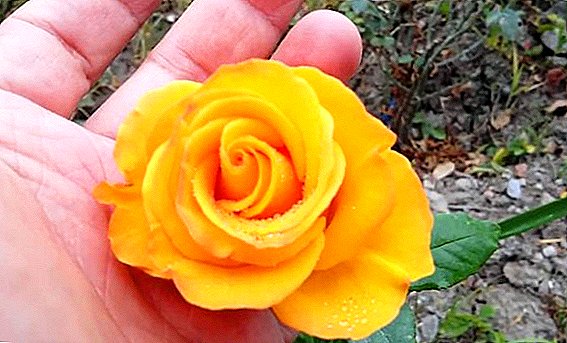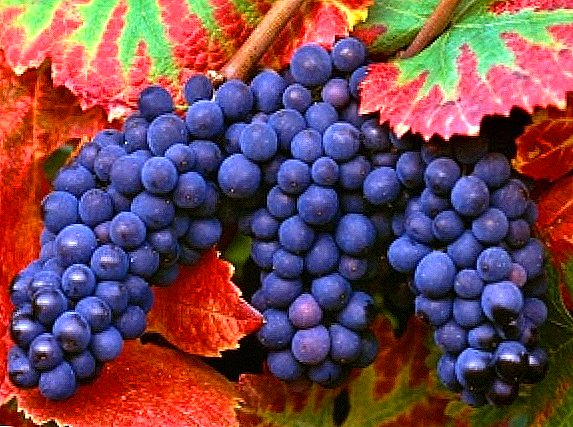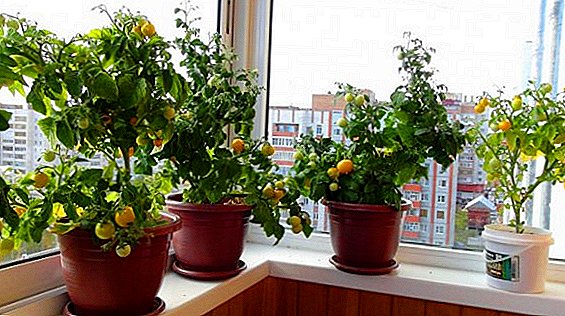 Prickly plum, it also turns (represented as a shrub or low trees) - one of the favorite plants of many gardeners. It has many useful properties, which, however, far from everyone knows. For example, thorns are used to treat diarrhea, while its flowers have the opposite effect and are used as a laxative. A decoction of thorns and its roots is an excellent antipyretic, and a decoction of the leaves gives a diuretic effect. How to grow such a miraculous plant? About this you will learn from this article.
Prickly plum, it also turns (represented as a shrub or low trees) - one of the favorite plants of many gardeners. It has many useful properties, which, however, far from everyone knows. For example, thorns are used to treat diarrhea, while its flowers have the opposite effect and are used as a laxative. A decoction of thorns and its roots is an excellent antipyretic, and a decoction of the leaves gives a diuretic effect. How to grow such a miraculous plant? About this you will learn from this article.
How to choose a place for landing thorns in my area
The prickly plum is distinguished by its unpretentiousness in terms of growth conditions, but for the planting of thorns it’s still requires a moist, fertile land with a neutral pH. Selected for planting area should be in a sunny place or in partial shade, and the bushes are planted at a distance of 1-2 m from each other.
The soil composition is not very demanding and can be successfully grown on sandy, dry and even saline soils. He also easily tolerates spring flooding.
Important! The fruits of spiny plum contain sugar, organic acids, tannic, pectin, aromatic and coloring matter, as well as vitamins of group C and P.Growing plants in heavy or overmoistened soils can easily lead to frost damage, although even the frozen turn is restored quite quickly.
 Place for planting prepare a week before planting. Compost, urea, humus and ash are introduced into the pits. If necessary, you can add a little lime, carefully mixing the mixture. As for the specific location, the turn perfectly feels in almost any part of the garden, but more often it is planted around the perimeter as a hedge.
Place for planting prepare a week before planting. Compost, urea, humus and ash are introduced into the pits. If necessary, you can add a little lime, carefully mixing the mixture. As for the specific location, the turn perfectly feels in almost any part of the garden, but more often it is planted around the perimeter as a hedge.If you do not know how to plant the turn in the spring, then you need to understand that sowing seeds or planting seedlings must be in pre-fertilized soil (per 1 sq. m of 8 kg of humus or 10 kg of compost, and 15-20 g of urea mixed with ½ cup of ash).
How to care for thorns
If you want to get a beautiful hedge or use the plant as a healing tool, proper attention should be paid to top-planting and caring for thorns. The most important points are watering, fertilizing and cutting blackthorn.
Did you know? If you refer to the ancient manuscripts and legends, then you will learn a few more names of thorns. ATthese records it is referred to as "feud" or "punitive scourge." This is explained by the fact that it was from his branches that the crown of Christ was made.
Watering and fertilizing thorns
 After planting, the plant must be plentifully watered and in the near-ground circle to tread the soil with your foot. If the wet earth compresses the root tightly, the seedling will have a better chance of settling down. The first time the plant is watered every 1-2 weeks, and as soon as the first leaves appear on it, and the trees grow, the number of waterings will need to be reduced.
After planting, the plant must be plentifully watered and in the near-ground circle to tread the soil with your foot. If the wet earth compresses the root tightly, the seedling will have a better chance of settling down. The first time the plant is watered every 1-2 weeks, and as soon as the first leaves appear on it, and the trees grow, the number of waterings will need to be reduced.
If it is very hot outside, then the turn should be watered more often, but only until the heat ends. An important task is the fertilization of thorns bushes. Thus, for abundant fruiting, gardeners annually make complex mineral and organic fertilizers in the tree trunks, and the surface of the ground is mulched. The older the plant, the more it needs additional feeding.
Pruning blackthorn
Trimming is usually carried out in the spring. It is in March that dry and diseased branches are cut and they give the plant the desired shape. Considering that the turn is prone to thickening, it has to be thinned out regularly, and if we are talking about a bush, then up to 4-5 well-bearing branches are left on the plant. Of particular interest is the formation of a bush according to the type of bowl, when in the first year the above-ground part of the bush is cut at a height of 30-50 cm, and in the second year only the most powerful shoots are arranged, arranged in a circle.
Important! If you remove all the branches, leaving only one main shoot, then soon you will get a tree instead of a bush.Pruning thorns in the fall mainly involves shortening shoots that are too long and removing branches that grow deep into the bush.
How to multiply the turn
You can multiply the turn in different ways, but not all of them are convenient to use. Let's sort through each one in turn.
Root offspring
 The easiest way to propagate a plant. Root shoots are carefully separated from the parent plant and planted in pre-prepared holes at a distance of 1-2 m from each other. You can plant plants and denser, but then they will have to thin out after the start of fruiting.
The easiest way to propagate a plant. Root shoots are carefully separated from the parent plant and planted in pre-prepared holes at a distance of 1-2 m from each other. You can plant plants and denser, but then they will have to thin out after the start of fruiting.
Seeds
The most successful period for sowing seeds is the beginning of autumn. It is then that they are separated from the pulp and placed in the ground. However, landing can be done in the spring. You are required to extract the seeds from the fruit and, after preliminary stratification (preparation, which involves placing the seeds in a cold or humid environment), sow them into the prepared soil.
Some gardeners soak sprouted seeds in honey syrup (about 12 hours), and then planted to a depth of 7 cm. After the subsequent fertilizer, when the seedlings have 2-3 leaves, they can be dived and cut off the tap roots (in some cases, only the tips of roots).
Cuttings
 Cutting is another way of vegetative propagation, in which the pruned shoots are used as planting material.
Cutting is another way of vegetative propagation, in which the pruned shoots are used as planting material.
Important! On the handle should be at least 5 healthy kidneys.In the spring, the cuttings are placed in a container with nutrient soil and placed in a greenhouse or mini-greenhouse. During the summer season they are watered and fed with fertilizers, and by the fall they receive excellent seedlings with a developed root system.
Inoculation
The best option for such breeding is grafting on hardy rootstocks. Choosing what to instill on the turn, first of all you should pay attention to plum and cultivated varieties of plums.
When breeding in this way it is important to grow a seedling stock from the seeds of the most winter-hardy varieties of thorns. Grafting on such seedlings significantly increases the winter hardiness of the grafted variety.
For growing rootstocks, seeds are taken from mature fruits that are undamaged by diseases and pests. After collecting the seeds, they are cleaned of pulp, washed and soaked in water for 3-4 days, daily mixing and changing the water.
Healing properties of thorns
 Thorn berries are often used for medical purposes. They are able to increase appetite, help get rid of indigestion, are excellent for the role of a diuretic. Decoctions from plants soothe the nervous system, and in the form of lotions and compresses are used for vitamin deficiency, pustular skin diseases.
Thorn berries are often used for medical purposes. They are able to increase appetite, help get rid of indigestion, are excellent for the role of a diuretic. Decoctions from plants soothe the nervous system, and in the form of lotions and compresses are used for vitamin deficiency, pustular skin diseases.
In addition, you can make juice from the sloe (by squeezing the pulp), and after boiling, roll up turnkey and use it in the winter to bury the nose or stop nosebleeds. Often they gargle with throat and mouth for dental and catarrhal diseases.
The roots, bark and even young wood of this plant have a pathogenic and antipyretic effect. Broth bark is used for malaria and erysipelas of the skin. Also it is suitable for douching with belyah.
Did you know? In Egypt, on the Sinai Peninsula, the most famous blackthorn grows outside the walls of St. Catherine's Monastery. The traditions of the Old Testament say that to Moses, who escaped from Egypt, God appeared precisely from a burning thorn bush.
How to collect and harvest the turn
Blackthorn is one of those plants, all parts of which can be used for medicinal purposes. Leaves, fruits, roots and even the upper layer of the bark are used in the treatment of certain diseases. However, to get the medicine, it is necessary to properly prepare all the parts of the plant, and therefore there is a logical question about how to dry the turn at home. First, the leaves, flowers, berries, fruits and roots must be properly collected.
 As a medicinal plant, the turn begins to collect in the spring, with the appearance of the first flowers on the bush. The collected buds and half-opened flowers are dried in a shaded place (spread out in a thin layer on paper or cloth), preferably in a draft. After that, they are placed in glass or tin cans, tightly closed and sent to a dark place for storage, stirring occasionally.
As a medicinal plant, the turn begins to collect in the spring, with the appearance of the first flowers on the bush. The collected buds and half-opened flowers are dried in a shaded place (spread out in a thin layer on paper or cloth), preferably in a draft. After that, they are placed in glass or tin cans, tightly closed and sent to a dark place for storage, stirring occasionally.
Blackthorn leaves begin to harvest in the middle of summer, immediately after the plant fades. Their drying and storage are performed in the same way as when preparing flowers.
Young shoots and branches are harvested in May-June, and then completely dried in the shade, in the wind or in the open air, in a well-ventilated area. They are stored in bundles for one year.
Preparation of roots must be postponed until autumn. It is during this period that they are best removed from the ground. They are cleared of soil, washed in cold water and cut into pieces, and then they are left to be ventilated in air and finally dried completely in ovens or dryers. The bark is removed from the tree before flowering. First, it is dried in the open air (this lasts for several weeks), after which, like the roots, it is dried in the oven.
 The roots and bark of thorns can be stored for more than 3 years, while the fruits, flowers and leaves are suitable for only a year. Thorn berries are harvested as they ripen, but it is best to perform this task after the first frost. They are stored and used until the new harvest.
The roots and bark of thorns can be stored for more than 3 years, while the fruits, flowers and leaves are suitable for only a year. Thorn berries are harvested as they ripen, but it is best to perform this task after the first frost. They are stored and used until the new harvest.
Thorns can be used not only in dried form, but also fresh. To do this, they are sorted and poured into wooden barrels, top covering with a damp cloth. In addition, from the thorns it turns out very tasty jam, jelly, compotes and jam. The finished raw material is stored in a dry, well-ventilated area.
For drying thorns use several recipes. For example, they can be dried as in natural conditions (of course, with good sunny weather) so with the help of the already mentioned dryer, where the turn dries at a temperature of 45 to 50 ° C for 6-7 hours. You can also use an oven or a warm stove for drying, which warms up to 40 ° C. In this case, the drying process will last about 12 hours. To improve convection, you can open the oven door or lift the stove flap.
Important! The residual mass of the product is about 4 times less in relation to fresh fruits.Harvesting thorns for the winter will allow you to stock up on vitamins that are sure to be useful to the body with the onset of cold weather.
Dangerous properties of thorns
 Despite all the useful properties, it should be noted, and contraindications to the use of thorns. First of all, it is an individual sensitivity to the fruits of the plant. We must not forget that even ripe fruit can only have pulp. The bones contain very strong poison, so all the available canned food with bones cannot be stored for longer than one year - over time, the poison from them will switch to the berries themselves.
Despite all the useful properties, it should be noted, and contraindications to the use of thorns. First of all, it is an individual sensitivity to the fruits of the plant. We must not forget that even ripe fruit can only have pulp. The bones contain very strong poison, so all the available canned food with bones cannot be stored for longer than one year - over time, the poison from them will switch to the berries themselves.
It is also impossible not to take into account the fact that the thorns are rather tart and sour, therefore can harm people with high stomach acid (observed with gastritis or ulcers). In addition, they have an intense color, which is why can cause allergic reactions. Do not abuse the number of berries, as the sweet products of the processing of thorns can lead to excess weight, and a large number of fresh berries cause indigestion.


